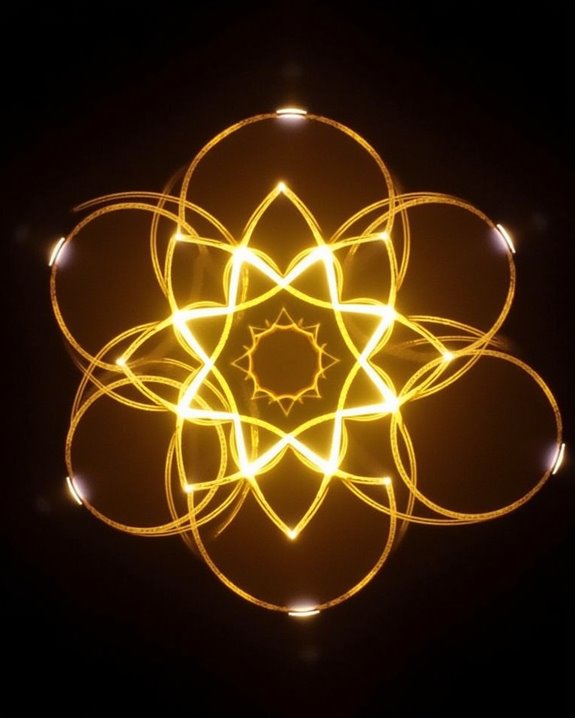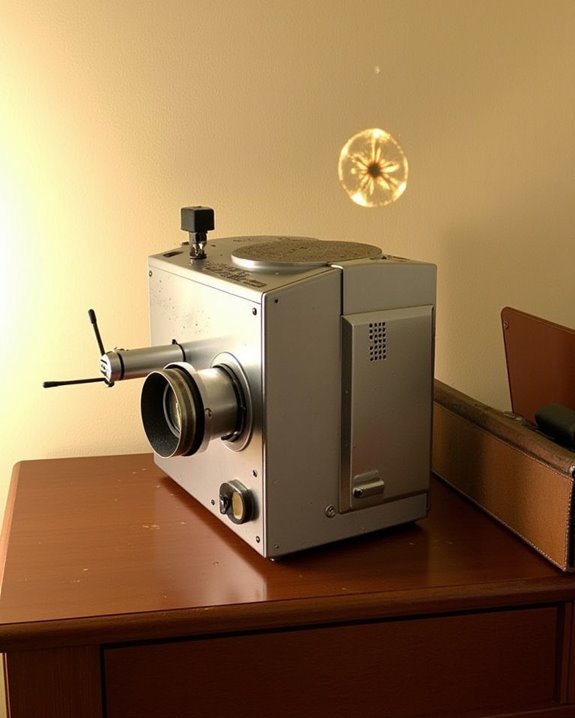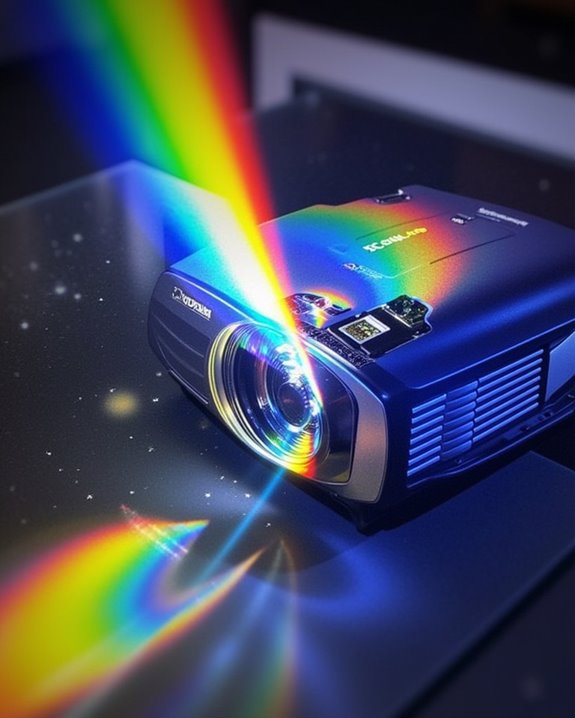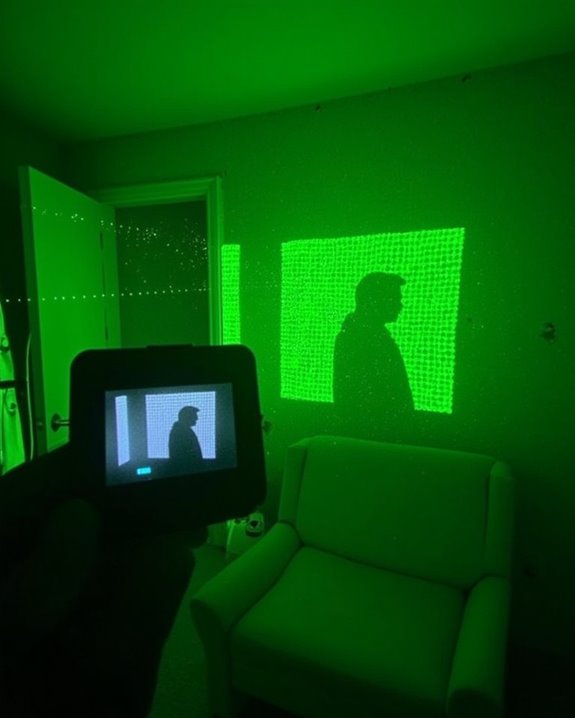When it comes to choosing between HID and LED for projector headlights, the decision can feel as complex as picking the right engine for your car, since both options offer distinct advantages in brightness, lifespan, and energy efficiency. You’ll notice that LEDs typically provide instant, focused light output with impressive longevity, while HIDs deliver strong illumination but require more power and have longer warm-up times. If you want to understand which technology truly suits your vehicle’s needs, the details ahead make all the difference.
Key Takeaways
- LED headlights offer longer lifespan, immediate full brightness, and superior durability compared to HIDs in projector housings.
- LEDs produce a sharper, more uniform beam with less glare, improving visibility and road safety for projector headlights.
- Recent high-quality LEDs match or surpass the brightness of 35-watt HIDs and approach 55-watt HID performance.
- LEDs are more energy-efficient and generate less heat, reducing strain on vehicle electrical systems and improving long-term reliability.
- Properly installed LEDs in projector headlights generally provide better overall performance and lower maintenance than HID systems.
Brightness and Light Output
When you’re comparing HID and LED projector headlights, brightness and light output are some of the most crucial factors to consider, since they directly influence how well you can see the road at night. HID kits, particularly 55-watt versions, have long been recognized for their intense brightness, using a xenon arc to create a powerful, defined beam pattern in projector housings. However, recent LED advances deliver similar or greater brightness at lower wattages, with top-tier LEDs often matching 35-watt HIDs and sometimes approaching 55-watt HID output. LEDs also provide a focused beam pattern with less scattering, reducing glare for oncoming drivers. In terms of color temperature, LEDs typically produce a crisp 6000–6500K daylight-like light, enhancing object visibility and contrast compared to some bluish-tinted HIDs. In testing, it’s important to note that headlight housing type can dramatically impact how much usable brightness you get from either bulb, so results can vary depending on your specific vehicle’s projector design. Additionally, recent innovations in local dimming technology help improve contrast and clarity in lighting applications, enhancing nighttime visibility.
Lifespan and Durability
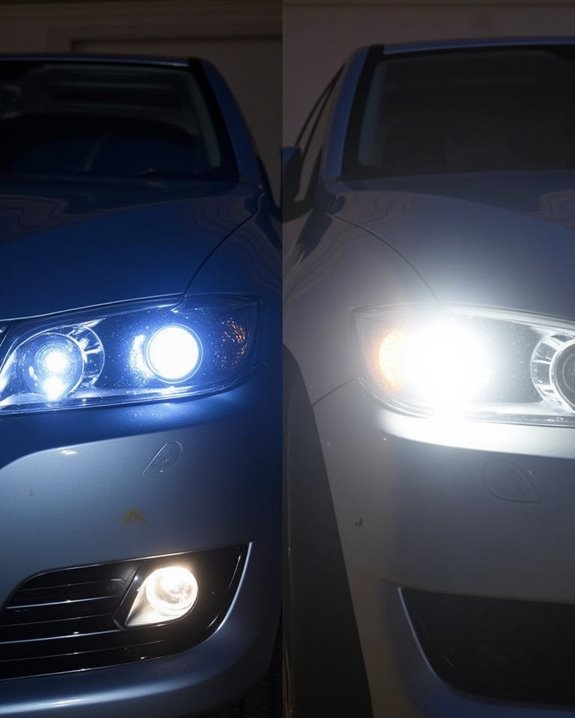
Although both HID and LED projector headlights offer advanced lighting performance, their lifespan and durability differ markedly due to their underlying technologies and construction. If you’re looking for longevity, LED headlights generally last 30,000 to 50,000 hours, while HID bulbs commonly reach only 3,000 to 5,000 hours before fading or failing. Material durability is a key advantage of LEDs, as they’re built with tough aluminum housings and have no fragile filaments or gas, making them highly shock-resistant and less prone to heat-related damage. HID bulbs, by contrast, are more susceptible to brightness degradation and internal wear due to their reliance on xenon gas and higher heat output. With LEDs, you’ll face fewer replacements, lower maintenance, and superior durability, especially in harsh or demanding environments. Notably, LED headlights are up to three times more durable than HIDs, making them a superior long-term investment for reliability. Additionally, LED technology’s higher contrast ratios contribute to improved visibility and performance under various lighting conditions.
Energy Efficiency and Power Consumption
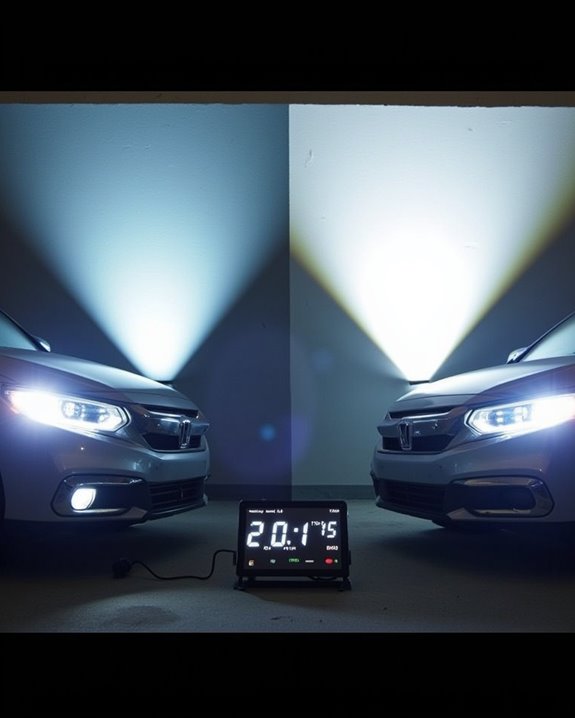
While lifespan and durability are key factors in choosing projector headlights, energy efficiency and power consumption are just as significant, especially for vehicles where electrical load and fuel economy matter. LED headlights typically operate at 80-90% efficiency, converting more electrical energy into visible light while generating less waste heat—this superior thermal management reduces unnecessary energy loss. In contrast, HID bulbs require a ballast and higher voltage regulation, adding complexity and increasing power draw, which affects electrical compatibility with many vehicles. LEDs consume less power, easing the load on your vehicle’s battery and potentially improving fuel economy, while their simple construction minimizes energy waste through fewer components. Overall, LEDs offer lower operational costs and a reduced environmental impact, making them a highly efficient choice for modern projector headlights. Additionally, LED headlights feature a focused beam that enhances visibility while reducing glare for oncoming drivers. Their efficiency parallels the high brightness requirements found in modern home theater projectors, which also rely on optimized energy use for peak performance.
Light Quality and Performance
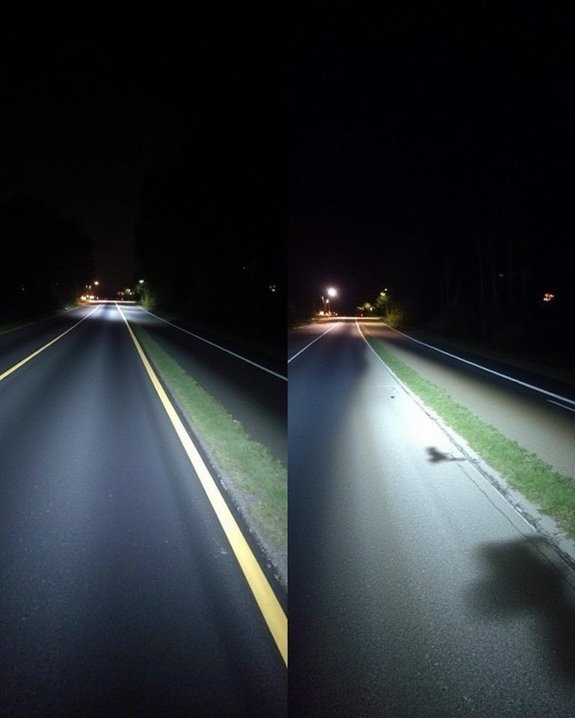
To fully understand the differences between HID and LED projector headlights, it’s important to examine how each technology affects light quality and overall performance, as these factors directly influence your driving experience and road safety. HID headlights are known for high brightness levels and versatile color temperature options ranging from warm yellow to bluish tints, but these can sometimes reduce visibility or create glare when temperatures exceed 8000K. In contrast, LEDs typically offer a stable, daylight-like color temperature near 6000-6500K, which enhances object recognition and provides a more comfortable driving environment at night. [When comparing the two technologies, LEDs also stand out for their much longer operational life, with most models lasting up to 50,000 hours—significantly more than HIDs, which usually last between 2,000 to 5,000 hours—making LED longevity a key advantage for drivers seeking long-term reliability.] Regarding light focus, LEDs deliver a sharper, more uniform beam with less scatter, thanks to their directional design and precise diode placement, while HIDs require careful alignment to minimize glare and light diffusion.
Cost and Installation
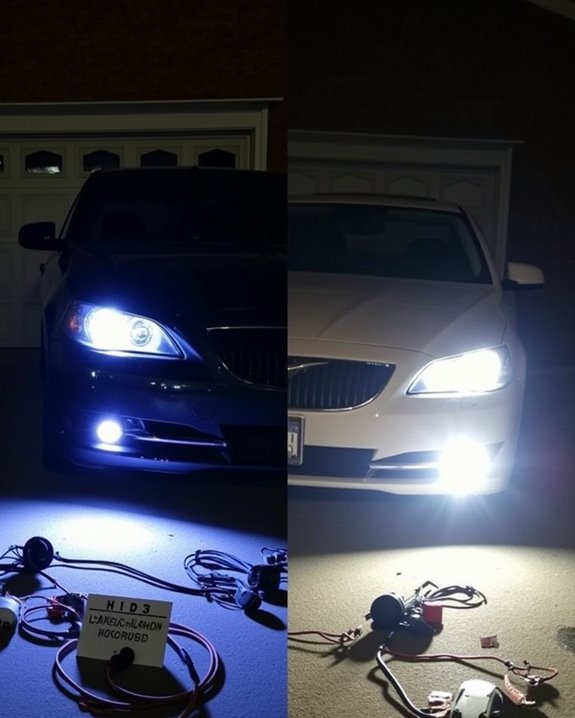
Beyond light quality and performance, the cost and installation process play a significant role when choosing between HID and LED projector headlights, as both options require different levels of investment and technical effort. HID bulbs are generally less expensive upfront, typically ranging from $40 to $250, while LEDs usually cost between $50 and $350, though LEDs are more cost-effective over time due to a lifespan of up to 45,000 hours compared to 15,000 for HIDs. HID systems offer more color options, which can increase customization costs. Installation complexity also differs: LEDs are easier to install, often taking 5–20 minutes, while HIDs may require 20–60 minutes and occasionally specialized tools. Both installations require basic technical knowledge, but HID setups can demand professional assistance for projector headlights. LED headlights are brighter and more energy-efficient than HID lights, which can further influence your long-term savings and the overall practicality of your upgrade decision.
Legal and Practical Considerations
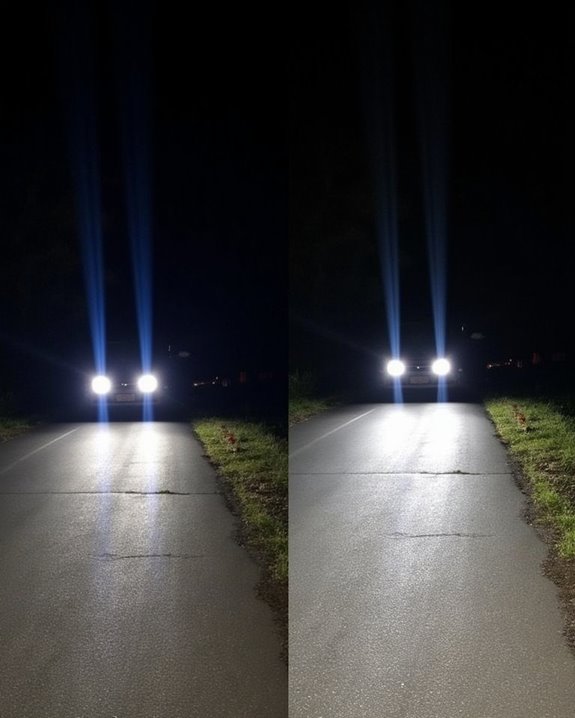
Even though HID and LED projector headlights both offer advanced lighting technology, it is pivotal to understand the legal and practical considerations that come with these upgrades, as compliance with regulations and day-to-day functionality can considerably impact your choice. Legal compliance starts with making sure your headlights meet regional regulations, such as the Federal Motor Vehicle Safety Standards (FMVSS) in the U.S., which require DOT certification for LED headlights. HID kits may not be legal if installed in housings not designed for them, making regulatory compliance essential. It’s important to note that DOT approval indicates headlights meet safety and quality standards, providing assurance that they are safe for road use. On the practical side, LEDs tend to offer greater brightness, a longer lifespan, and improved energy efficiency, while also producing less heat and simplifying installation. By considering both legal requirements and everyday usability, you’ll make a safer and more informed decision.
Frequently Asked Questions
Can I Switch Back to Halogen After Installing HID or LED Headlights?
Yes, you can switch back to halogen after installing HID or LED headlights. Just check headlight compatibility and wiring. Halogen bulbs are usually plug-and-play, making bulb upgrade options simple, but performance may be affected in projector assemblies.
Do HID or LED Projector Headlights Affect Radio or GPS Signals?
You might notice some radio interference or signal disruption with HID or LED projector headlights, especially if installation or shielding isn’t done well. Generally, they don’t directly affect GPS signals, but proper grounding and ferrite beads help minimize issues.
Are HID or LED Headlights Compatible With Automatic Headlight Leveling Systems?
You’ll find both HID and LED headlights can work with automatic headlight leveling systems, but compatibility issues and calibration requirements vary. Always check your vehicle’s specs, as some setups need special adaptors or adjustments to function properly.
How Do HID and LED Headlights Perform in Foggy or Rainy Conditions?
When you’re driving in foggy or rainy conditions, you’ll notice LED headlights offer better weather performance and visibility enhancement. They cut through fog and rain more effectively, reduce glare and scatter, and provide a focused, consistent beam.
Can I Use HID or LED Bulbs With Adaptive Projector Headlight Systems?
You’ll need to check bulb compatibility and headlight integration with your adaptive projector system. Don’t just swap HID or LED bulbs—many systems require specific types or proper retrofit kits to maintain safe performance and correct beam patterns.


